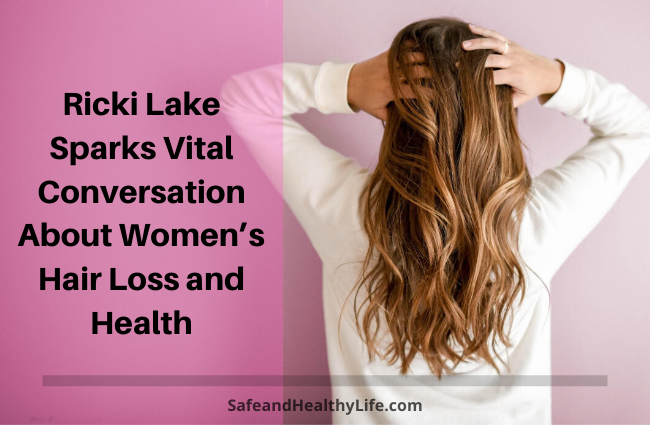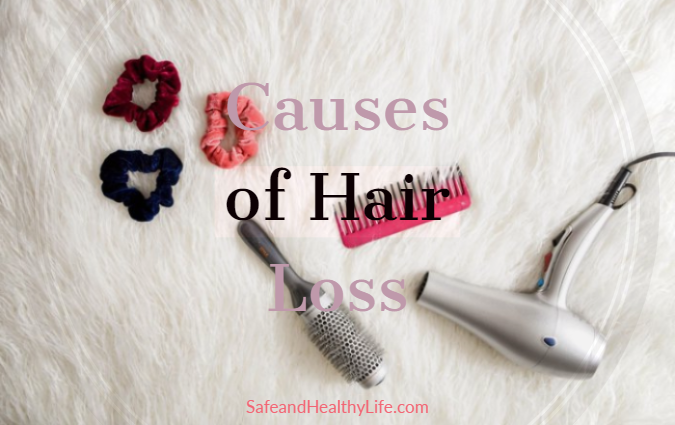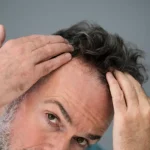
Ricki Lake started the year off with a brave and honest post revealing her 30 year battle with hair loss. Sharing an image of her new close-cut style, her message is one of hope for a healthy and self-confident future. However, her journey has not been easy.
The star explained that her hair originally began to fall out after being relentlessly styled for her role in the original Hairspray. She further chalks her hair loss up to genetics, combined with yo-yo dieting, hormonal birth control, and pregnancy. With hair that sheds and regrows in unpredictable cycles, the lustrous locks we so often see on celebrity heads were unachievable for Lake.
Detailing the exhausting procedures required to maintain her hair, Lake tried many common solutions, however, she saw minimal results. From steroid injections in her scalp to countless supplements and vitamins, hair extensions and wigs; Lake tried them all. She describes the frustrating process of seeing progress and then experiencing hair loss again.
Eventually, Ricki reached somewhat of a solution with added hair, which still required “maintenance every 10-12 days, where my added hair would need to be tightened (sometimes painfully) and my gray hair would need to be colored”
Most striking of all is the emotional impact she describes. The trauma and shame of hair loss was a core theme of her revelation. It’s been “debilitating, embarrassing, painful, scary, depressing, lonely, all the things,” Lake said. She felt suicidal at times and not even her therapist knew about her “level of deep pain and trauma”.
Hair Loss in Women
Lake’s message and explanation of her journey spark a vital conversation about women’s hair loss, causes, and impact. With one-third of women estimated to experience hair loss at some point in their lives, Ricki’s experience is certainly not unique. However, it’s rarely spoken about. There is increased societal stigma around hair loss for women, which can make it difficult to both face and treat. Long hair and femininity are so often conflated that when someone is stripped of their hair, they may feel that the way the world sees them has changed.
Just like men, hair loss for women can present in many different ways, however, it generally involves a thinning of the hair on the scalp overall. Circular or patchy bald spots, as well as sudden hair loss, are also common. Lake’s attempts to restore her hair are relatable for millions of women across the globe. So, where does hair loss begin?
Causes of Hair Loss
The most common cause of hair loss for women is the same as for men: androgenic alopecia. This is a genetically determined form of hair loss, and it presents differently depending on gender. For men, baldness starts at the temples. Women, however, experience an overall thinning of the hair. This is referred to as male-pattern or female-pattern baldness.
Beyond genetics, hormones play a significant role. Menopause, birth control pills, pregnancy, childbirth and thyroid problems can all cause thinning or lost hair. Similarly, life sometimes takes its toll, and frequently, women find that they experience hair loss due to stress.

Unfortunately, common hairstyles can also cause hair loss for women. Hairstyles that put pressure on the scalp can irreparably damage hair follicles, resulting in hair loss over time. Think braids, weaves and tight ponytails – many women’s go-to look. In addition, dyes and other products can really damage hair over time as well.
The Consequences of Hair Loss
Hair loss is more than just a cosmetic issue. Yes, it may be argued that at the end of the day it’s “just hair”. That’s true, and there are indeed far more debilitating and painful health issues out there. However, the mental health impact of hair loss cannot be understated.
Hair is often seen, for better or worse, as a symbol of youth, fertility, and health. People experiencing hair loss can feel a lack of control over their bodies and a change in the way that they interact with the world. Drastic changes to our bodies can send shockwaves out through our lives.
Indeed, anxiety, depression, post-traumatic stress disorder, and suicidal thoughts are more common in people who suffer from alopecia. The consequences of hair loss truly high-impact.
Hair Loss Treatments
There is hope, however, in terms of treatments and solutions. Innovations in the industry mean that women experiencing hair loss have a lot of routes they can pursue.
Surgical
A famous hair transplant is sometimes an option. Surgical hair loss treatments for women include the FUT and FUE methods. These are variations of the same concept; taking healthy hair follicles from an area of the body where there is plentiful hair, and implanting them into the area where there is sparse hair. Notice, we said hair follicles, not the hair itself. This is because you’re transplanting the healthy cell, and new hair should grow from there for years to come.
Non-surgical
For those who want to avoid surgery, Low-level Laser Therapy is an option. Sounding very futuristic, this uses wavelengths of light to stimulate growth.
Platelet-rich Plasma Therapy is likewise possible. This involves injecting protein-rich platelets into areas that need it, stimulating growth and healing. Creams and tonics such as Minoxidil or DHT blockers are also popular, as well as vitamins and supplements.
The aim of these therapies is to encourage healthy, natural growth from the hair follicles themselves. With more focus on women’s hair loss, now and in the future, there is hope that Ricki and people like her will no longer have to experience the shame and pain of hair loss. Therapies, better care, and increasing innovations in hair loss solutions paint a bright picture for the future of hair care and treatment.
About The Author:
Stephanie Grey – Stephanie is a leading expert in journalism for beauty and cosmetics. With a degree in beauty therapy from the southern Illinois university and 6 years of journalism experience, she has a solid understanding of the industry.




